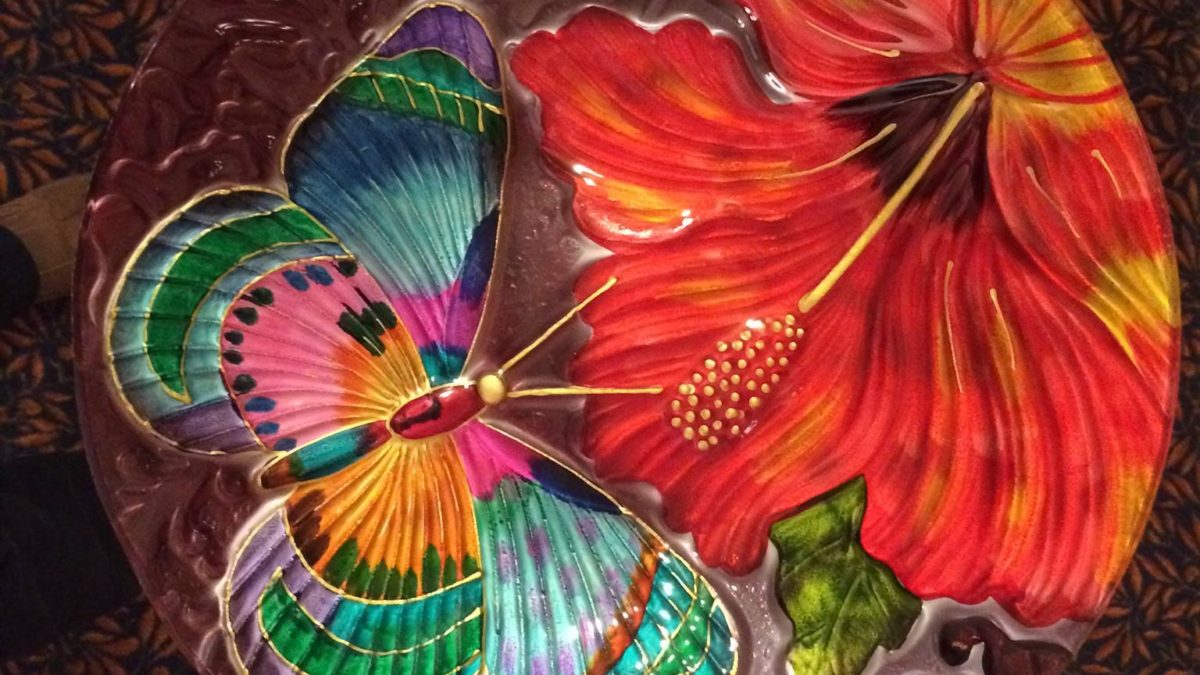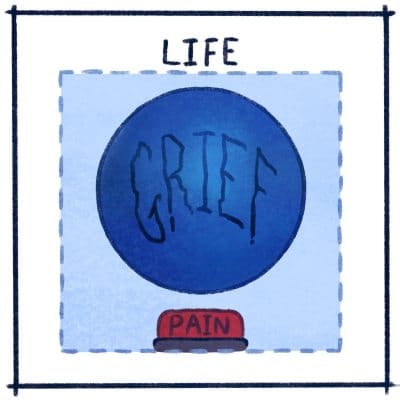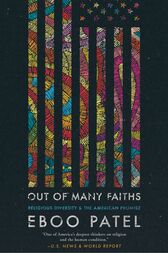
My friends,
As I read social media posts from you, meet with you on Zoom, text back and forth, and connect in all the ways we can during this pandemic, I’m starting to see the collective shock that we’re living through such times wear down and signs some something more that we’re all struggling to do. I’ll name it…
Grief.
We’re living through a collective trauma. In Spirit and Trauma: A Theology of Remaining, Shelly Rambo discusses trauma as “the suffering that does not go away. The study of trauma is the study of what remains. The phenomenon of trauma’s remainder presents challenges to our understanding of what constitute an experiences and, subsequently, what it means to witness an experience.” Our sensible reaction to being in a moment of collective trauma is grief.

That denial that this can possibly be as bad as its being said to be? Grief.
That panicked attempt to help everyone in every way that you possibly can and frustration that such actions are impossible? Grief.
That depression that paralyzes us from being able to act and reach out in even the smallest ways? Grief.
That anger over every little thing being asked of you in this time and every little thing that goes wrong? Grief.
That desire to isolate myself from what’s happening to take care of myself and nagging guilt that I’m putting myself first? Grief.
Those nightmares you’re having that make you wake up at night and feel fearful and lonely? Grief.
You might detect an echo of Elisabeth Kübler-Ross’s model on stages of grief in this litany of griefs. Yeah. In addition to being the associate professor of religion at Gallaudet University, I’m also an ordained minister in the Baltimore Washington Conference of The United Methodist Church. So I’ve got some training in understanding grief. What I’m not is a licensed therapist or counselor, if you’re finding yourself paralyzed by grief, reach out to one. Engage in the process of therapy, it can really help. It has for me in those moments of my life.
I’m actually reluctant to tell you much about grief and grieving though. Pointing people to particular resources can be tricky because –
Grief is weird.
I can tell you why I think grief is weird though. Grief and trauma are often intensely personal. They force us to look at parts of ourselves and our lives and our world that we’d rather not examine too closely. I think this is what causes many people to overlook that grief is what they’re experiencing. But naming a thing is powerful. It allows us to recognize it and accept the reality of it.
Grief can be many things but it’s a part of our response to traumas. Traumas can be:
- The loss of a loved one to a virus,
- The loss of one’s daily routine and sense of security,
- The loss of one’s daily independence as a college student away from home,
- The loss of carefully laid out plans for you and your loved ones’ future,
- The loss of trust in the social institutions we rely upon.
- The loss of being able to protect those you care about.
If you go looking for help on understanding and managing grief, there’s a ton of resources, research, theories, processes, and ideas out there for you to discover. Far from being a bewildering mess, this is a good thing—because grief is many different things to many different people.
Unfortunately, there’s no one easy way to grieve and respond to trauma. It seems that even in the best of therapeutic relationships with a licensed counselor, grief is something we often muddle through because…we have to find our own way through it.
Grief is weird—its intensely personal.
But, in times like this, grief is also has a public dimension. While paralyzing grief needs to be treated in individual or small group counseling, as a spiritual leader, I’ve come to see one of my roles as someone who is called to help public grieving happen. Dealing with grief as a public health matter can perhaps prevent the spiral into debilitating grief that requires more intense help.
Oddly, one of the things I’ve discovered in 23 years of ordained ministry and 12 years of professional teaching in higher education is that, I seem to be sort of good at figuring out how to grieve. It’s one of the more awkward moments of my life when I’m in a discussion about one’s spiritual gifts and I share, “I’m good at grieving.” In part because, it’s usually something our culture tells us to do in private, or to do and then be done with. Shh. Don’t bring that up. It hurts.
But those of us who grieve know, grief lingers. It changes us. It’s something we have to come to terms with and respect when it rears its head in our lives. Being public about grief and how to do it seems imminently valuable right now. Trauma is that which remains.
One of the internet memes that floats around from time to time that captures a sense of how grief works is the “box with a ball and a button.” Imagine yourself as a box. Inside the box is a button. When the button is pushed, you feel emotional pain. Grief is a ball. At first, the ball is huge and fills the box. The button is always pushed. After awhile we start to figure out how to manage grief and the ball shrinks. But as we move around, the ball can now start to jostle around inside. So when we start going about our lives doing things again, the ball is rattling against that button again. Time can make grief continue to shrink, but it’s still there. The more it shrinks, the more its able to bounce around in that box. When it’s small enough, it can bounce around most of the time without hitting that button. But it’s still there. Every once in awhile it’ll hit that button square on. When we least expect it, it’s there. It hits the button, and we need to take the time to acknowledge the pain, remember the grief is still there, and deal with it.

In this way, grief becomes familiar. Learning to say something like, “Ah, hello again my old friend. While your visit causes me pain, I will sit with you awhile until you’re ready to go again,” becomes a powerful framework for handling grief. Far from being easy, befriending grief as something we can sit with is one of the hardest things we can learn to do. But it’s also one of the most human things we can do. It allows us to understand ourselves, understand each other, and…be more human with one another.
How do we achieve this? Many ways.
For those of us who hold spiritual or religious practices and beliefs, our traditions are often far more rich in ways to grieve that we realize. What is a funeral other than a ritual to acknowledge our mortality and come to terms with what might lie beyond? What is sitting shiva or having a wake but an opportunity to reflect, both individually and collectively, on what a meaningful life should be? Saying prayers for the dead, lighting candles in memory, counting beads as we meditate, feeling the wind around us as we sit on the earth our bodies return to, crying out in anger, agony, and pain, singing songs that transport us from somber sobs to shouting glories. All of these things are imbued with ways to grieve.
For those of us who do not identify with spiritual or religious practices and beliefs. We still find comfort in ritual expression that grounds us and binds us with one another. Sewing quilts that provide a personal expression of those we’ve lost, writing names in stone or on walls lest we forget what we learn in terrible times, reciting names and responding, “PRESENTE!” to recall the continued presence of those who were taken from us, lighting candles, sitting in silence, screaming in anger, listening to a song that changes our mood on endless loop. All these are imbued with ways to grieve.
My friends, as I reflect upon these things I want to suggest one more thing. Do not fear to go public with your grief and be with one another through this process. Help each other grieve. I have those books, songs, and people I turn to in seeking help to grieve as well.
We need stories that help us grieve. Stories that transcend the barriers we erect over differences of belief, practice, politics, culture, and personality. One of my current projects is a response to Laurie Patton’s response in Eboo Patel’s book, Out of Many Faiths: Religious Diversity and the American Promise. Patton, who is the president of Middlebury College and recent past president of the American Academy of Religion, raises an interesting challenge in her chapter title, “Plural America Needs Myths.”

Plural America refers to the reality that our American cultural landscape is diverse in regard to religious, spiritual, non-religious, cultural, and political diversity. As Diana Eck has put it, diversity is a fact, but pluralism is an achievement. Pluralism is something we have to work for in cultivating knowledge and respect across our differences toward a common good. This is the heart of the interfaith movement. To build pluralistic societies that allow people of all stripes to find ways to live together. It’s tough work.
Patton points out that one of the things we need to achieve this goal is myths. Myths here doesn’t mean ‘made up things’ or ‘commonly believed falsehoods’ about something. Myths here mean stories that spark our imagination and call us to construct meaningful ways of understanding who we are as a people and why we should be a people.
Mythologies need not be religious or spiritual either. Public mythologies are often the stuff of civic history. It’s important to interrogate our public mythologies and consider counter stories among them as well though. This is why Patton says we need myths and not just a Myth. Patton is particularly interested in the ‘everyday myths’ that show people bonding together in extraordinary ways that show us that a plural America is possible, even in the midst of partisan rancor.
So one of my interests is in exploring what sort of myths we might tell each other across differences in Deaf communities that illustrate this power of storytelling. As I consider the role of public grieving, I’ll share one story to close this post:
I was a campus minister at Gallaudet University in the fall semester of 2000 when our community was suddenly shook to its core when a 19 year old student was found murdered in his dorm room. This was but the start of what would become a tumultuous two years of continued crises for our campus, some of which were connected to events of national and global trauma including the events of September 11, 2001. But, at this moment, we didn’t know that. All we knew is that a student had been found murdered in a dorm room on our close knit campus.
The response was incredible. Fear and shock disrupted our ability to think through how to respond to crisis. The president of the university called a town hall to gather the community for information. Campus ministers were asked if one of us could open the gathering with a few words of calm and peace. Those of us who were on campus at the time were somewhat surprised by this request as so often the Office of Campus Ministries has been overlooked as a resource for community support. Yet, it also isn’t terribly surprising. As I mentioned earlier in this post, one of the functions of a spiritual leader is…leading a public response to grief. We were sort of at a loss of what our approach should be though. The staff person relaying the request for this said, “Something like the 23rd Psalm?” and then had to leave to attend to a million other things.
So, we began to discuss what we should do for this. We were somewhat leery about using scripture, particularly scripture commonly used in Christian funerals, as we were well aware of the public nature of this gathering and that many in our campus community have had negative experiences with religion and that this was no time to remember those traumas on top of fresh traumas. In addition, we were, and are, a very diverse community with respect to spirituality and religion.
We raised concern this with the staff person who made the request who acknowledged the difficulty and suggested, “Just make it a Deaf thing. Words that calm fears,” and had to turn their attention to other matters again. This phrase seemed puzzling to me, but a light went off in the eyes of one of the hearing campus ministers who had been on campus a long time. “This is why you need to do it, Kirk. Of those of us who are on campus right now, you’re the Deaf one. It can come from you as a Deaf thing by embodying the spirit of it in ASL from a Deaf person rather than an imposition of a Christian sentiment from a hearing person.”
This still didn’t make entire sense to my head as I was probably just beginning to move from the start of my Deafhood journey to the middle of it as I got comfortable with ASL as a second language and being a Deaf person from a mainstreamed background in a Deaf cultural institution. But…ok then.
I had about 30 minutes to figure out how to make the 23rd Psalm a Deaf thing. I basically tapped on the notion that Psalms are songs, poetry, expression of emotion. Given that ASL has poetic forms and expression, could I translate this Psalm as an ASL poem? ASL is not my first language and in 2000, I still felt far from fluent, particularly when being in a community with a significant number of native ASL speakers and scholars of ASL and Deaf culture. But…I’d give it a try.
Shortly after, I’m giving my rendition of the 23rd Psalm in ASL on stage after greeting everyone and saying, “This is a passage from my spiritual tradition that gives me comfort in times of trouble, I hope it can mean something for you too.” I left the stage of Elstad Auditorium with my heart in my throat feeling unsure about what the reception might be. I was grateful for bright stage lights and dark back walls to look out into rather than the faces in the crowd where all eyes were on me.
It was after a town hall full of emotion, information, worry, care, anger, and fear I began to have people come up to me. A professor of ASL and Deaf studies whom, to that point, I’d never known to address anything with relation to religion or spirituality came hurrying up to me with an urgent look on their face. “Uh oh,” my gut told me. “That was amazing. So beautiful. I’ve never seen the 23rd Psalm mean something like that in ASL before.” A Muslim student came up to me and said, “That isn’t part of my tradition, but it was really peaceful and made me think of things in the Quran that are like that.” A lesbian student came up and said, “I’m not religious and frankly, don’t like religion, but that was beautiful.” A Christian staff member came up to me and said, “I’ve been working here for years and that was the first time I’d seen a university event open with scripture. Thank you.”
This story remains one of the most vivid memories in what would become two years of vivid memories of being a public agent for spiritual needs in a diverse community of spiritual, religious, and non-religious people bound Deaf experiences, ASL, and membership in the Gallaudet community.
It speaks to a power of interfaith engagement across religious, spiritual, and non-religious differences in extraordinary times to be human with one another and bring the resources we all carry from our own ways of being human to bear on being with one another. To grieve is very human. To be able to grieve well is difficult. To be able to grieve together is what gets us through even the most trying times.
